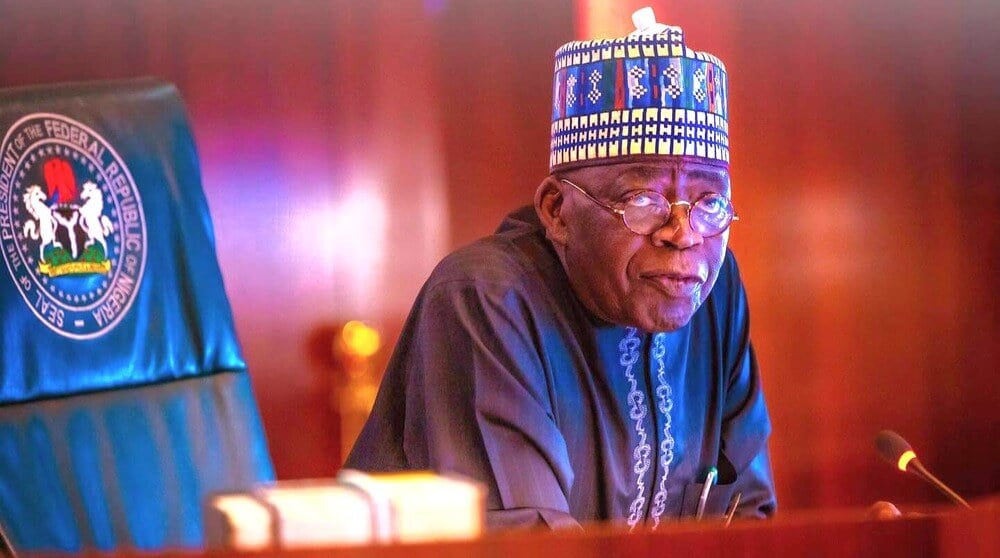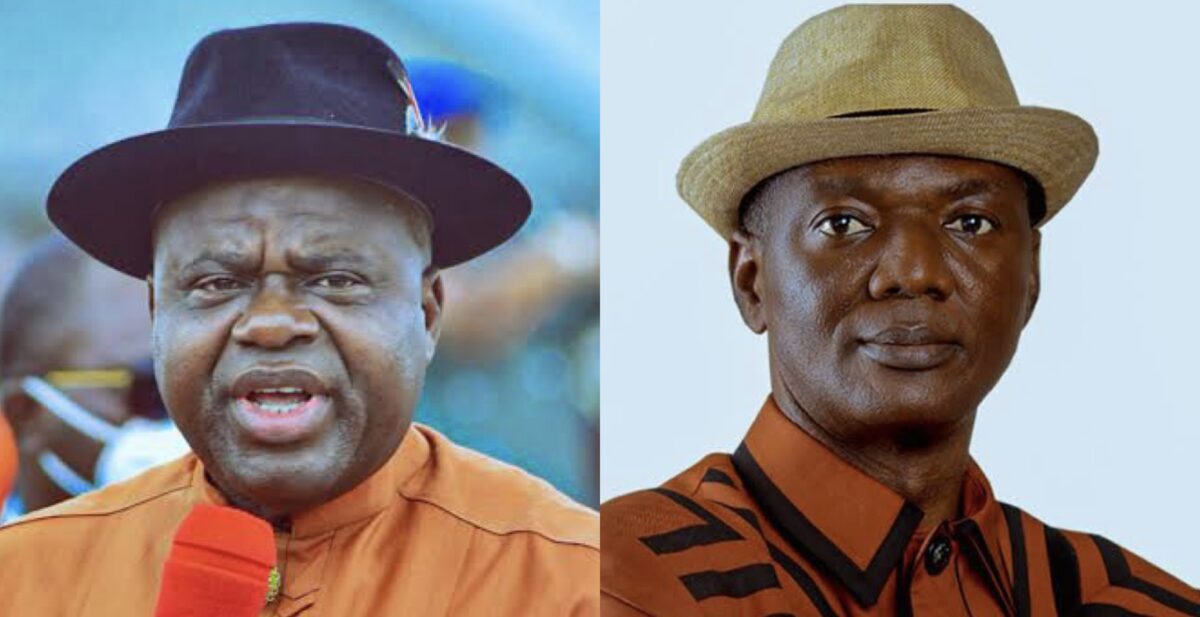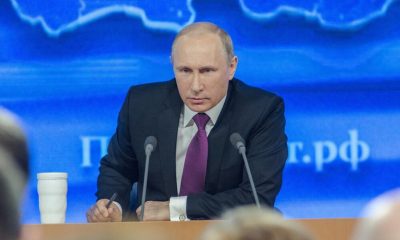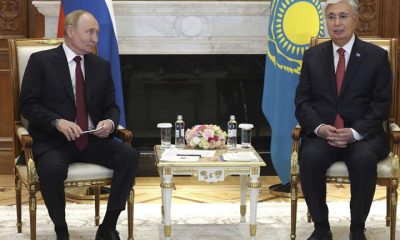Politics
Taliban officials to attend UN climate summit for first time since Afghanistan takeover
The Taliban is sending officials to attend the UN climate summit in Azerbaijan’s capital Baku starting on Monday, in what will be the group’s first appearance at the forum since its forceful takeover of Afghanistan.
The Taliban-controlled foreign ministry’s spokesperson Abdul Qahar Balkhi said officials from the country’s National Environmental Protection Agency have arrived in Azerbaijan to attend the Cop29 conference. The Taliban’s leaders have controlled the environmental agency for more than three years now, after they took power in Kabul in August 2021.
The group’s government is not formally recognised by the UN and the international community owing to its restrictions on the basic rights of citizens, particularly women, who are banned from education and the workplace. The UN has stopped the Taliban from taking control of Afghanistan’s seat at the General Assembly and continues to back the appointed representatives from the previous Ashraf Ghani administration to represent the country on the global stage.
Azerbaijan has invited the Afghan environment agency officials to Cop29 as observers, allowing the former insurgent group to “potentially participate in periphery discussion and potentially hold bilateral meetings”, according to a diplomatic source.
But the Taliban will not be allowed to take part in the proceedings of full member states as the Taliban is not recognised within the UN system as Afghanistan’s legitimate leaders, instead as de facto authorities, the source said.
So far the UN has only invited the Taliban to talks specifically on Afghanistan’s future in Doha. China and Russia have expressed willingness to foster ties with the de facto administration and have invited its ministers to attend forums in China and central Asia in the past two years.
Afghanistan has been badly affected by a succession of climate emergencies, including flash floods, torrential rains and droughts, in the past year.
Flash floods have killed hundreds this year, sweeping away villages and people in remote parts of Afghanistan. The war-ravaged country is heavily dependent on agriculture, but successive floods and droughts have wiped away fields and produce.
International isolation has compounded the country’s economic struggles, making its population one of the poorest on the planet.
“Afghanistan is one of the countries that is really left behind on the needs that it has. It is a double price that they are paying,” said Habib Mayar, deputy general secretary of the g7+, an intergovernmental organisation of countries affected by conflict.
“There is lack of attention, lack of connection with the international community, and then there are increasing humanitarian needs.”
From news to politics, travel to sport, culture to climate – The Independent has a host of free newsletters to suit your interests. To find the stories you want to read, and more, in your inbox, click here.
Politics
Accord Party Crisis Deepens As Another Governorship Candidate Emerges For Osun Polls

A faction of Accord Party has held its own governorship primary, where Mr. Clement Bamigbola emerged as the faction’s governorship candidate for the 2026 Osun State election.
This is coming just four days after the emergence of Governor Ademola Adeleke as the party’s flag-bearer.
Recall that the party under the leadership of Maxwell Mgbudem, on Wednesday, held a similar exercise which produced Governor Ademola Adeleke as the party’s candidate.
However, a faction of the party rejected his emergence, insisting that Barrister Maxwell Mgbudem is not the legally recognized national chairman of the Accord Party.
In a fresh development on Sunday, about 300 delegates of the Accord Party from across Osun State elected Bamigbola as the factional candidate during a primary held at Regina Suite, Osogbo.
Bamigbola emerged through a voice vote conducted by the delegates, after which the Chairman of the Primary Committee, Hon. Olufemi Ogundare, declared him the party’s candidate for the 2026 Osun State governorship election.
Politics
Tinubu, ECOWAS leaders meet in Abuja over Benin coup, regional stability

President Bola Tinubu and leaders of ECOWAS countries are currently meeting in Abuja.
The 68th Ordinary Session of the ECOWAS Authority of Heads of State and Government is taking place at the State House Conference Centre, in Abuja.
Leaders of West African countries at the meeting include President Julius Bio (Sierra Leone, ECOWAS Chair), President Patrice Talon (Benin), José Maria Neves (Cabo Verde) and Alassane Ouattara (Côte d’Ivoire).
Others are Adama Barrow (The Gambia), John Mahama (Ghana), Umaro Embaló (Guinea-Bissau), Joseph Boakai (Liberia), Bassirou Faye (Senegal) and Faure Gnassingbé (Togo).
The meeting is coming against the backdrop of five turbulent years for West Africa, which saw coups in Mali (2020, 2021), Burkina Faso (twice in 2022), and Niger (2023).
The latest incidents include an attempted coup in Benin on December 7, 2025, and renewed instability in Guinea-Bissau.
At the time of filing this report, details of the meeting are yet to be disclosed.
Politics
Breaking: Diri Orders Autopsy on Bayelsa Deputy Governor’s Death, Warns Against Politicisation

Bayelsa State Governor, Senator Douye Diri, has ordered an autopsy to determine the cause of death of the state’s Deputy Governor, Lawrence Ewhrudjakpo.
Governor Diri gave the directive on Saturday while receiving former President Goodluck Jonathan at the Government House in Yenagoa.
Reacting to the incident, the governor condemned what he described as widespread misinformation and speculation on social media, warning against any attempt to politicise the deputy governor’s death.
“I want to make an appeal. I have seen people politicise his death. In Ijaw land, there is no enmity in death. Let nobody politicise the passing of our dearly beloved deputy governor,” Diri said.
“If anyone truly loves him, this is the time to show it. I have directed that an autopsy be carried out to reveal the cause of his death. There is a lot of nonsense going on on social media.”
The governor further urged the public to focus on mourning and honouring the late deputy governor, noting that the state government had declared three working days of mourning in his honour.
“If anyone is issuing statements to eulogise him, let it end there. Let us mourn him because Bayelsa State is in a mourning mood,” he added.
Governor Diri also called for unity and love among the people, reminding them of the inevitability of death.
Speaking during the condolence visit, former President Goodluck Jonathan described the late Ewhrudjakpo as a committed and dedicated individual who played a key role in the activities of his foundation.
“For me, he was someone my foundation and I will never forget. He represented the governor in all our programs,” Jonathan said, adding that Ewhrudjakpo worked tirelessly in that role, even more than when he served as deputy governor.
-
Business1 year ago
US court acquits Air Peace boss, slams Mayfield $4000 fine
-

 Trending1 year ago
Trending1 year agoNYA demands release of ‘abducted’ Imo chairman, preaches good governance
-

 Politics1 year ago
Politics1 year agoMexico’s new president causes concern just weeks before the US elections
-

 Politics1 year ago
Politics1 year agoPutin invites 20 world leaders
-

 Politics1 year ago
Politics1 year agoRussia bans imports of agro-products from Kazakhstan after refusal to join BRICS
-
Entertainment1 year ago
Bobrisky falls ill in police custody, rushed to hospital
-
Entertainment1 year ago
Bobrisky transferred from Immigration to FCID, spends night behind bars
-
Education1 year ago
GOVERNOR FUBARA APPOINTS COUNCIL MEMBERS FOR KEN SARO-WIWA POLYTECHNIC BORI










